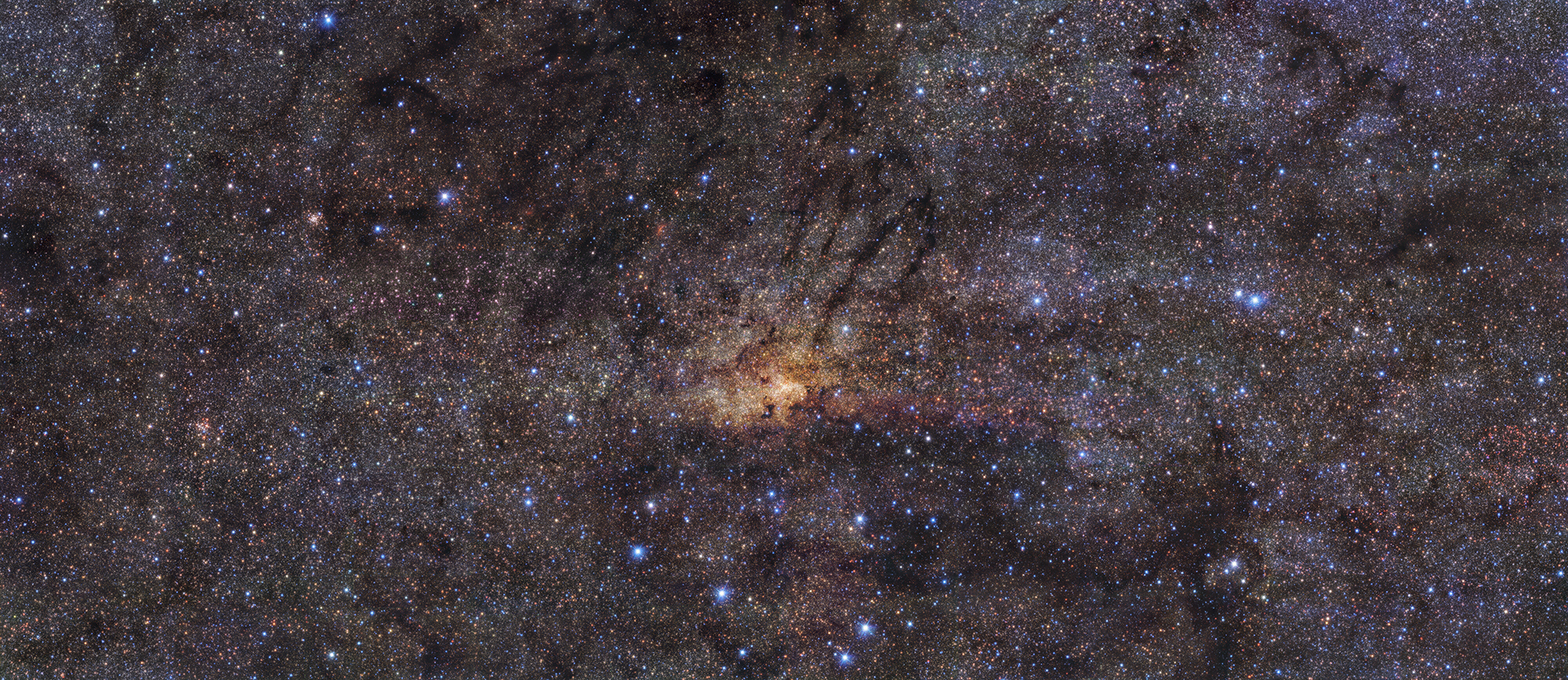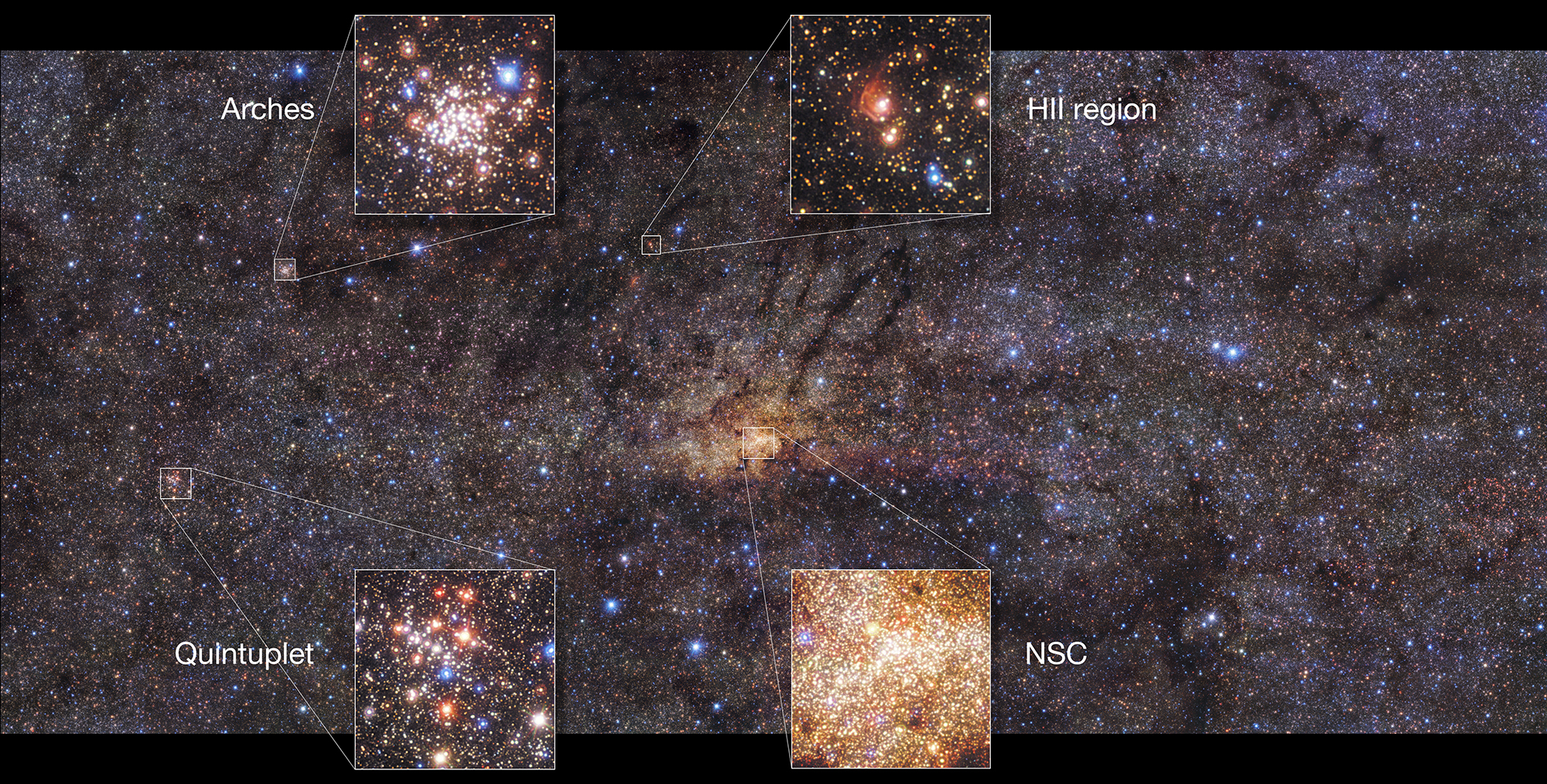Scientists Spot Ancient Star Burst in Milky Way's Heart in Stunning New Image
Astronomers gazing into the heart of the Milky Way have discovered new clues about our galaxy's dramatic past.
Using the European Southern Observatory's Very Large Telescope (VLT) array in Chile's Atacama Desert, astronomers created a high-resolution image of our galaxy's center. The new observations revealed a burst of new star formation in the Milky Way's early years that was so intense, it led to more than 100,000 supernovas, or exploding stars.
"Our unprecedented survey of a large part of the Galactic centre has given us detailed insights into the formation process of stars in this region of the Milky Way," Rainer Schödel, a researcher with the Institute of Astrophysics of Andalusia (IAA) in Granada, Spain, who led the observations, said in a statement.
Video: See the Milky Way's Central Region in Incredible VLT View
Related: Our Milky Way Galaxy's Core Revealed (Photos)

An image of the central region of the Milky Way galaxy as seen by the HAWK-I instrument on ESO's Very Large Telescope.

An annotated version of the image highlights different features in the central region of the Milky Way.
"Contrary to what had been accepted up to now, we found that the formation of stars has not been continuous," Francisco Nogueras-Lara, who led two new studies based on these observations of the Milky Way central region at IAA, said in the same statement.
One of the studies, which was published today (Dec. 16) in the journal Nature Astronomy, found that about 80% of the stars in the core of the Milky Way formed between 8 billion and 13.5 billion years ago. For comparison, scientists believe that the Milky Way galaxy is about 13.6 billion years old.
"This initial period of star formation was followed by about six billion years during which very few stars were born," ESO officials said in the statement. "This was brought to an end by an intense burst of star formation around one billion years ago when, over a period of less than 100 million years, stars with a combined mass possibly as high as a few tens of million suns formed in this central region."
Get the Space.com Newsletter
Breaking space news, the latest updates on rocket launches, skywatching events and more!
Video: Milky Way Galaxy's Central Region - Very Large Telescope Zoom-In
"The conditions in the studied region during this burst of activity must have resembled those in 'starburst' galaxies, which form stars at rates of more than 100 solar masses per year," said Nogueras-Lara, who is now based at the Max Planck Institute for Astronomy in Heidelberg, Germany.
Researchers captured these images using an instrument on VLT called HAWK-I, a wide-field imager that observes the sky in near-infrared wavelengths, which allows it to "see" through dense clouds of interstellar dust and gas. The HAWK-I instrument allowed researchers to capture this stunning new view of the Milky Way, which was first published in October in the journal Astronomy & Astrophysics.
- Burst of Star Formation in Milky Way Likely Came from Cosmic Crash
- Milky Way's Neighbors Have Upped Their Star-Forming Game
- How Did the Milky Way Get Its Bulge? Fast-Moving Stars May Hold Clues
Email Hanneke Weitering at hweitering@space.com or follow her @hannekescience. Follow us on Twitter @Spacedotcom and on Facebook.

Join our Space Forums to keep talking space on the latest missions, night sky and more! And if you have a news tip, correction or comment, let us know at: community@space.com.

Hanneke Weitering is a multimedia journalist in the Pacific Northwest reporting on the future of aviation at FutureFlight.aero and Aviation International News and was previously the Editor for Spaceflight and Astronomy news here at Space.com. As an editor with over 10 years of experience in science journalism she has previously written for Scholastic Classroom Magazines, MedPage Today and The Joint Institute for Computational Sciences at Oak Ridge National Laboratory. After studying physics at the University of Tennessee in her hometown of Knoxville, she earned her graduate degree in Science, Health and Environmental Reporting (SHERP) from New York University. Hanneke joined the Space.com team in 2016 as a staff writer and producer, covering topics including spaceflight and astronomy. She currently lives in Seattle, home of the Space Needle, with her cat and two snakes. In her spare time, Hanneke enjoys exploring the Rocky Mountains, basking in nature and looking for dark skies to gaze at the cosmos.









